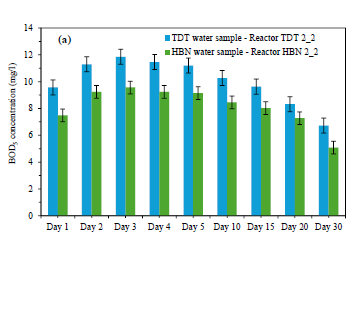Investigation of the Nutrient and Organic Matter Removal in Surface Water by Aquatic Plants: A Laboratory Scale Study
Keywords:
Microsorum pteropus “Narrow”, Cyperus haspan L., Salvinia cucullata, aquatic plant, Removal of nutrients and organic matterAbstract
The intensification of urbanization and industrial activities has precipitated a substantial influx of nutrients and organic pollutants into surface water systems, thereby exacerbating water quality degradation and posing significant threats to aquatic ecosystems and human health. Phytoremediation, characterized by the use of aquatic plants to sequester, metabolize, and remove contaminants from water bodies, emerges as a compelling, eco-friendly method. In this study, individual and combined cultivation experiments of three aquatic plants, including Microsorum pteropus “Narrow” (AQ1), Cyperus haspan L. (AQ2), and Salvinia cucullata (AQ3), in different water samples collected from landscape lakes were conducted. This study aimed to quantify the ability of these plants to enhance water quality by reducing nutrients (measured as Total Nitrogen - TN and Total Phosphorous - TP) and organic pollutant levels (measured as biological oxygen demand BOD5), while also assessing their growth and adaptation during the experiment. Results showed that highest removal efficiencies of nutrients and organic matter were obtained in the case of AQ2. The combined cultivation ratio between AQ1 and AQ2 of 1:2 based on weight percentage (% w.t.) was also determined as the most appropriate design, since relatively similar removal efficiencies were found in both water samples: BOD5 (29.8%), TN (66.7%), TP (91.7%), Coliform (64.9%) with internal landscape lake (TDT water sample) and BOD5 (32.1%), TN (60.0%), TP (92.9%), Coliform (16.7%) with external landscape lake (HBN water sample). This study not only deepened the scientific understanding of plant-based water purification processes but also demonstrates their practical applications in enhancing urban water management practices sustainably.

